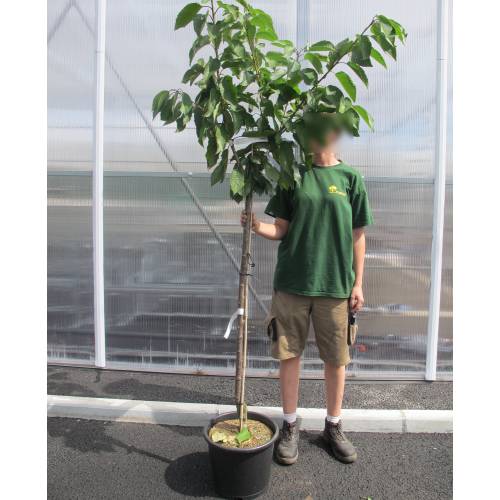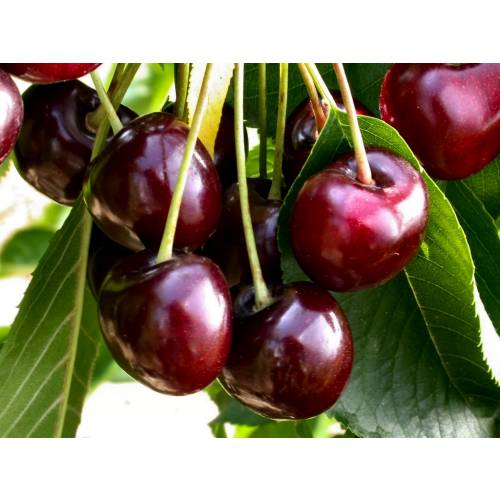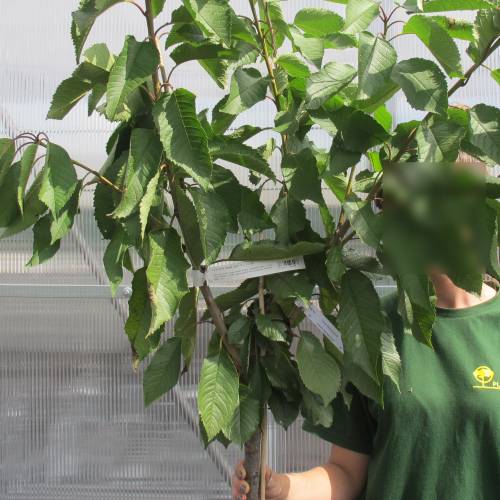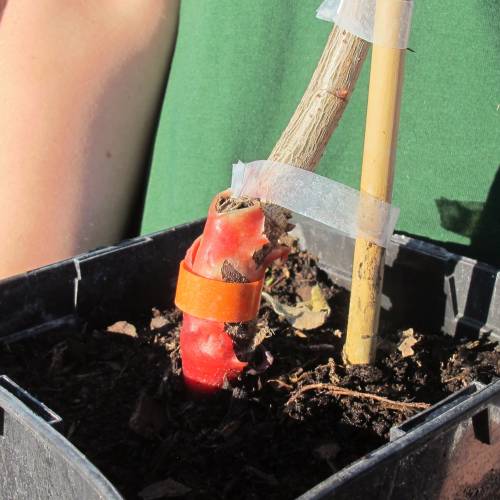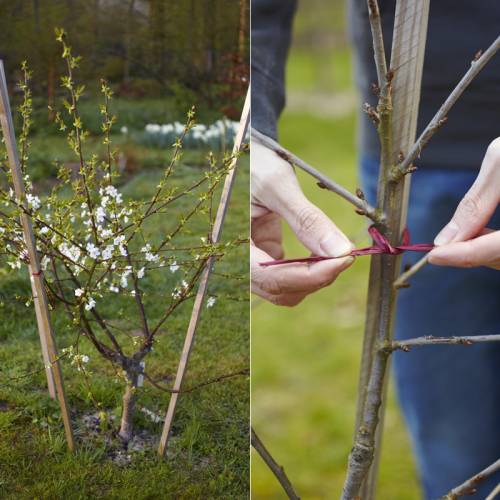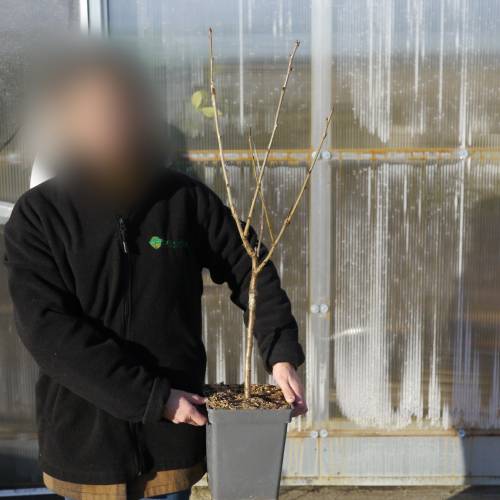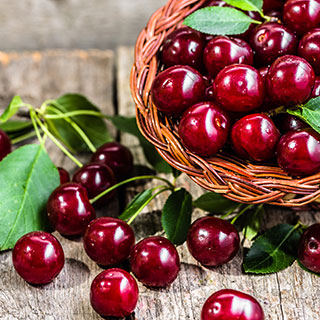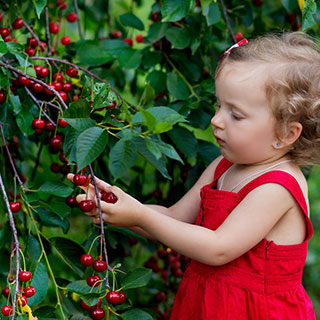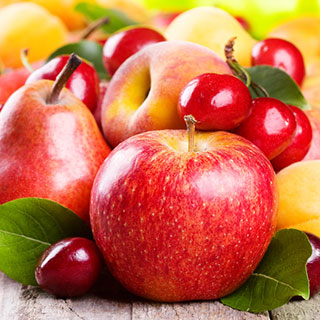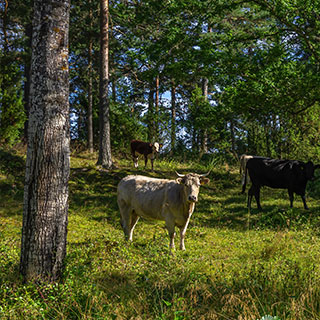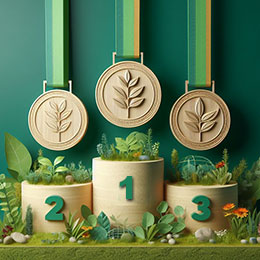
Plants
Cherry tree Bigarreau Burlat / Prunus cerasus Bigarreau Burlat
-
67.08 € Cherry tree Bigarreau Burlat
0093J - Available
-
64.43 € Cherry tree Bigarreau Burlat
0093V - Available
-
61.88 € Cherry tree Bigarreau Burlat
0093I - Available
-
59.23 € Cherry tree Bigarreau Burlat
0093H - Available
-
56.68 € Cherry tree Bigarreau Burlat
0093F - Available
-
54.03 € Cherry tree Bigarreau Burlat
0093E - Available
-
30.68 € Cherry tree Bigarreau Burlat
0093N - Available
-
29.07 € Cherry tree Bigarreau Burlat
0093P - Available
-
14.95 € Cherry tree Bigarreau Burlat
0093SC - Available
-
Geographic origin: Asia Minor.
Adult size: Height up to 18 metres.
Foliage: Deciduous.
Type of soil: All, except very damp.
Climate: Hardy, however the flowers will die if temperatures fall below -3°C.
Position: Full sun.
Pollinators: Napoleon.
Properties and uses:
The cherry tree is a tree that is often found in our gardens. It is covered by large numbers of flowers in April, just before the cherries arrive. The cherry tree is one of the fruit trees that demands the least attention and produces fruit most easily. Cherry trees grow very quickly, up to a metre per year and a large harvest of fruit can be expected from the second year onwards. The cherry tree Burlat produces fruit very early, from the middle of May onwards. The cherries are large, dark red and very juicy, they are also sweet and very tasty.
Plant them now: the shortest way to your plate is through your garden!
Jean-Michel Groult advises you
It does not like loneliness
Before anything else, a Cherry tree needs the company of another Cherry tree placed up to 50m away (as the bee flies !) to produce fruits. On its own, the tree blossoms abundantly when established but very few flowers turn into fruits. If another variety is growing nearby, it will bear a lot of fruits. Therefore plan on growing at least two trees. Some tips allow limiting the volume of a Cherry tree (see below). But if you really haven't got the space for two trees, all is not lost: offer one to your neighbour, even if it means planting it for him so that each of you enjoys their own cherries! This tree requires so little care that it will have no problem accepting it...
Limit the tree's bulk
A cherry tree grows naturally as one stem, with a very straight line which can reach up to 12m in height for 10m spread. In other words, it likes to spread itself and if you let it grow as it wishes, then beautiful cherries will be taunting you, out of easy reach, right up the branches. The solution consists in cutting the central branch above the lateral branches. Be careful as this action is irreversible! Take time to reflect. If you cut the main branch at a height of 50cm for example, you are going to have a Cherry tree with very low lateral branches and it will become difficult to mow the lawn underneath. Generally, the tree is pollard at 1.20 to 1.50m from the ground. Cutting the tree must be done at the latest two years after its planting. If the main branch measures more than 5cm in diameter, then it's too late.
Guide the branches
Another way of gaining space is to force the tree to grow in the direction which pleases you most. You can indeed stake the young branches to make them grow in a more upright position than their natural one. Leave these stakes in situ for at least two to three years.
Few diseases, easy-care
The Cherry tree is an autonomous tree. Once planted it is drought resistant and does not need pruning. When the site is very wet, the bark can split and let gum run out. This resin must be left in situ. If the wound is sizable (the trunk swells a little and has a scar of more than 10cm), apply some Bordeaux mixture (fungicide) with a brush to make sure that it penetrates well in all the crevices and allow the tree to recuperate.
The most common problem is the bursting of the fruits. This is caused by a lack of water before the return of the rainy season, when the cherries are ripe. The tree and the fruits suddenly become saturated with water and their skin cracks. To avoid this happening, water the tree (100L at its base per week) as soon as the cherries start changing colour and this up to the end of the harvest if humidity as not come back in the meantime.
A little help
Weeding the base and applying whitewash along the trunk (in all seasons but preferably at the end of winter) help the Cherry tree to stay healthy.

